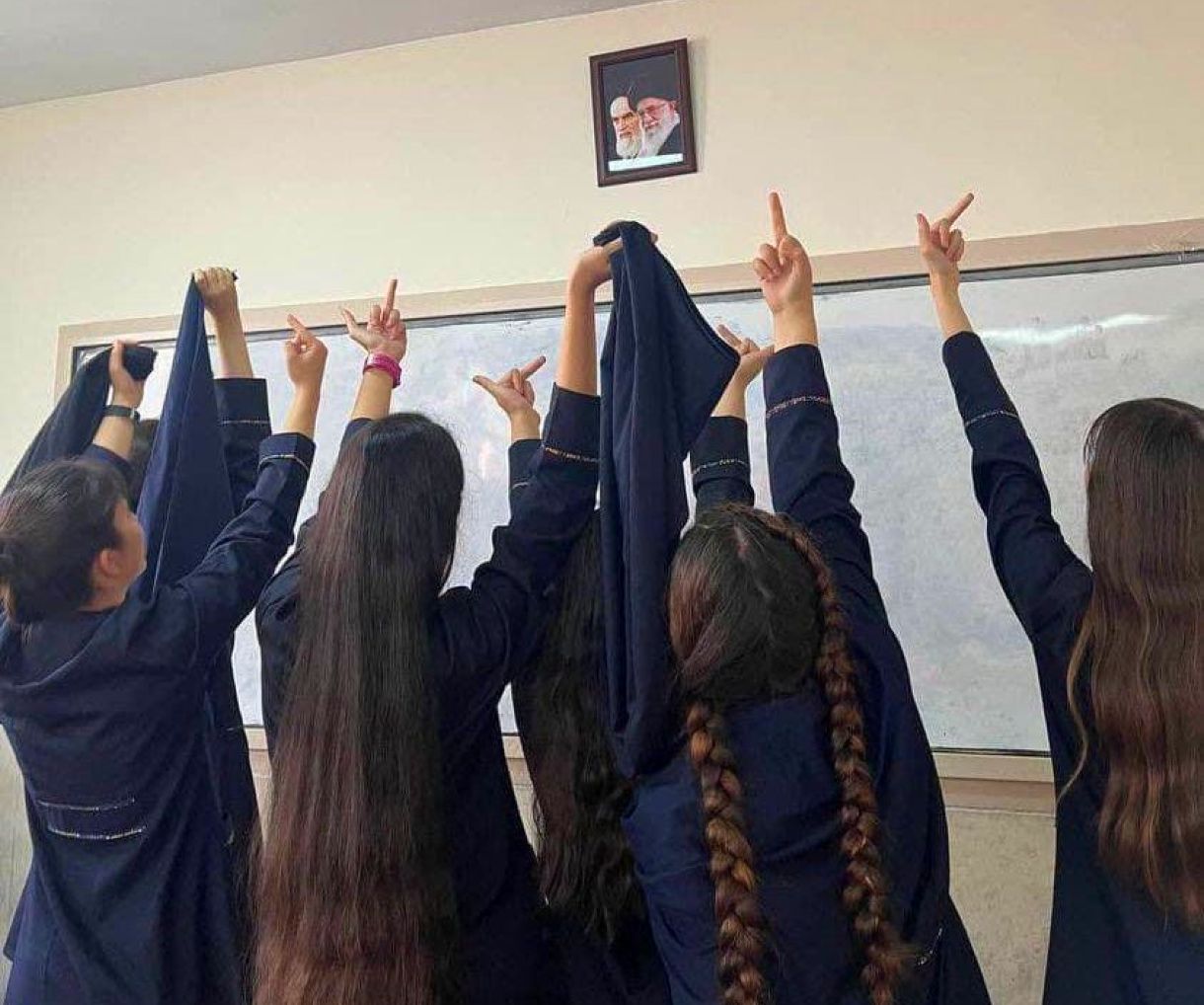Three weeks ago, the anti-hijab (veil) protest in Iran sprang in the aftermath of the death under police torture of 22-year-old Kurdish girl Mahsa Amini. Iranian women led people’s demonstrations against the police, and the clerical regime lost no time to retaliate by using lethal force against a civilian demonstration.
The Human Rights Watch’s latest report says that 201 lives have been lost so far, mostly of women, including teenagers, and of males because the people joined the protestors out of sympathy.
There are certain universally accepted norms of crowd handling with clear instructions that collateral deaths must be avoided as far as possible. The Iranian regime does not appear to have felt comfortable observing the universally established norms and using various means short of opening fire on unarmed civilians.
After all, it was a demonstration led by unarmed but victimized women, not militants or gun-wielding goons, where the firing was the last option.
Similar Protests In India, But Without Brute Force
We are reminded that in Hyderabad, the capital of Telangana State, there were also similar demonstrations by Muslim women and men against the government’s decision not to allow the use of a veil by Muslim girl students in the classrooms.
Justifying the order that all students should have the uniform dress during school hours and in classes, the government never intended to force Muslim women to give up the veils. But to maintain discipline in the schools, the students should have had a uniform dress code.
The school authorities went to the length of suggesting that Muslim girl students can remove and deposit their veils in their bags once they sit in the classroom, and when they return home, they can put on the veil.
The Muslim leaders of Hyderabad and many other places in India came out, raising a hue and cry that their religious practices were being distorted or assailed by the BJP government. Crowds came to the streets yelling provocative slogans and castigating the government for treating Muslims shabbily.
Throughout these demonstrations, the police were present at the site standing close to the demonstrators, but they neither took recourse to the batons nor fired a single bullet to disperse the crowds. Some Muslim leaders in neighboring countries vociferously lamented that Muslims were suppressed in India.
Conversely, the police, civilian authorities, and local administration officers tried to pacify the unruly crowds and successfully sold reason to the demonstrating youth.
Alas! Iranian females were denied the opportunity to be brought to the table for talks and discussing the issue with their ramifications. Had that been done, 200 precious lives would not have perished.

Suppose the regime of the Ayatollahs felt that the veil was a must for Muslim women under the tenets of the religion. In that case, they could have persuaded the demonstrating crowds to send in a delegation who the clerics would apprise of how it was an obligation prescribed by the religion and thus had to be observed.
They had the right to say that it would be straightforward as the regime was in the hands of eminent scholars of Islam, and the demonstrators were also believers in the Islamic faith. Rather a pleasure to show them the proof in Islamic theological works that a veil was mandatory for Muslim women.
Freedom Of Choice Vs. Orthodoxy
There are varying views on using or not using the veil for Muslim women. Many customs change over time. In many Islamic countries, there has never been any dispute over the use or no use of the veil.
Liberal regimes have left it to the choice of the womenfolk concerned. Their societies have accepted the women moving about without the veils. In the Balkans, where Muslims predominate, the veil is rarely seen. Kurds, Chechens, Bulgars, Azeris, Turks, and Central Asians are Muslim-dominated communities that do not enforce the use of the veil on their women.
However, in many Arab countries like Saudi Arabia, and Iran, Afghanistan wearing the veil is strictly enforced. The clerical regime in Iran calls Iran an Islamic Democratic country.
What is happening in Iran is a conflict between democracy and Islamic orthodoxy. The question is if Islamic law is to be enforced through guns, then that negates the people’s general will. In such cases, the meaning of democracy shall have to be redrawn.
The ground reality is that the demonstrators in Tehran and other towns in Iran did not raise the slogan only against the veil. There were other slogans demanding the dismissal of the regime.
There were slogans against the Iranian Supreme Leader and the administration. Thousands of men also joined these demonstrations though women were at the forefront. That speaks a lot and may be considered an aspersion on the functioning of the administration.
The morality enforcement police, at the receiving end of these disturbances, are not trained in mob handling incidents. Who has given them the certificate that they are entitled to establish something against the morals in the case of a culprit based on religious tenets?
One can say that they are a law unto themselves. It is like a parallel law-enforcing agency, and how many such agencies are there in Iran?
Protesters in #Mahabad #Iran this evening #IranProtests #IranRevolution #MahsaAmini #مهسا_امینی #SarinaEsmaeilzadeh #NikaShakarami #نیکا_شاکرمی pic.twitter.com/QedWfhmvQf
— GⓗØѕⓉ Ƥ?เ???ѕѕ ?? (@_barbby) October 13, 2022
The impact of the anti-veil demonstration on the regime of the Ayatollahs is adverse. The movement may be suppressed, and hundreds may be sent behind bars. More stringent laws will be enforced, and more vigil mounted.
But a dispassionate look at the history of Iran will show that the movement will never be crushed lock, stock, and barrel. Iranian women are educated, intelligent and responsive to logic.
Hundreds of thousands of Iranians fled their country when the Khomeini revolution became victorious, and the regime passed into the hands of the clergy. They knew where their freedom, initiative, originality, and innovative powers could flourish and blossom. Most of them migrated to the US.
There is a sizeable Iranian Diaspora in the US. It has adapted to the American lifestyle and, at the same time, retained its indigenous cultural traits also. Their vision has broadened, and they can think beyond life’s small and petty things.
Iran At Crossroads
The clerical regime of Tehran cannot stop the impact of the life and thoughts of the Iranian Diaspora on the home populace. After all, their connectivity cannot break soon. This comixing of the two segments of the Iranian population is a significant threat to the clerical regime.
The only way of saving the regime is to come forward with a modern and futuristic vision to transform the socio-economic and political trajectory of the orthodoxy.
The news of Iran’s blatant violation of women’s rights and brutal suppression of demonstrators in various towns of Iran, resulting in many fatalities and wounded, has shocked the free world and the European nations in particular.
These nations were making a joint effort to resolve Iran’s controversial nuclear issue. Some clearly said they disapprove of imposing sanctions on Iran. But with the repression of women, Iran is likely to lose their sympathy, at least as long as Iran does not rein in the rogue morality force personnel and bring in reforms that ensure women’s rights.
A divided house is an invitation to its enemy. Iran is at loggerheads with the US, Israel, and Saudi Arabia. While these three countries are inching towards creating a common platform for dealing with the regional and global situation, Iran is bogged with the nuclear obsession, anti-Israel and anti-American rhetoric, and most, unfortunately, in believing that issues can be solved only through the power of the gun be it Yemen or Lebanon or Syria or Palestine.
Supreme leader Ali Khamenei once appealed to the Muslim world for support to Kashmiri Muslim insurgents. How will he react if India appeals to the world to support the women of Iran engaged in a historic battle with their rulers? The brutal repression of Iranian women gives a handle to those who consider Iran under Ayatollahs as one of the adversaries of democracy.
There will be more repression of Iranians by the clerical regime because if the movement succeeds, the regime will lose not only the sheen but also its credibility.
Iran stands at the crossroad of history. The success of Iranian women in casting the veil aside will be a precursor for women all over the Muslim world to raise their heads upright and force the regimes to concede their constitutional and human rights.
- Padma Shri KN Pandita is the former Director of the Centre of Central Asian Studies at Kashmir University.
- Mail EurAsian Times at etdesk(at)eurasiantimes.com
- Follow EurAsian Times on Google News




